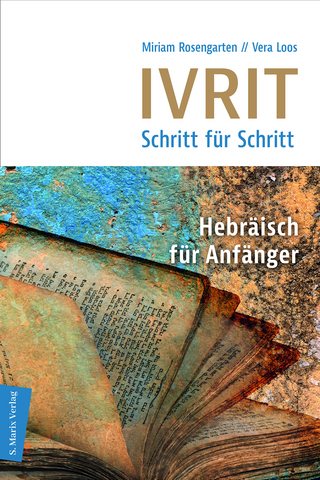
Handbook of Early Language Education
Springer Nature Switzerland AG
978-3-030-91663-3 (ISBN)
- Titel wird leider nicht erscheinen
- Artikel merken
Mila Schwartz is professor in language and education and the Head of Research Authority in Oranim Academic College of Education (Israel). She received her first degree from the Pedagogical State University of Saint-Petersburg in linguistics and literature and completed her MA and PhD in the University of Haifa, in learning disabilities and literacy development among bilingual and trilingual children. Professor Schwartz conducted her post doc studies in Ben-Gurion University, Israel (the Kreitman Foundation Fellowships), and in Ontario Institute for Studies in Education of the University of Toronto. Her research interests include studying language policy and models of early language education, linguistic, cognitive, and socio-cultural development of early sequential bilinguals/multilinguals and family language policy. Currently, her research focuses on theorizing the phenomenon of interactions between child language-based agency, teacher's agency, and parents' agency in early language education. In this research she draws on Bronfenbrenner's human ecology theory (1979, 1994) that provides a framework for understanding the role of early language education in a young child's life. Recently, she has proposed and elaborated on the following theoretical concepts: Language-conducive context, language-conducive strategies, and child language-based agency. Her academic distinction at the international level is based on more than 20 years of extensive research and exemplary achievements in academia and at top-tier research organizations such as the International Symposium of Bilingualism, where she held the position of Secretary of the Steering Committee from 2015 to 2019, and the Multilingual Childhoods Network (known also as the Special Interest Group, SIG, of the European Early Childhood Education Research Association, EECERA), where she currently acts as Convenor.
Preface.- Introduction (including some brief historical perspectives on early language education) The Editors Part I General foundations in language education during the early years.- Chapter 1. Early language education and language socialization.- Chapter 2. Language education policy in early language education.- Chapter 3. Intercultural education and early language learning.- Chapter 4. The role of cognitive factors in young learners' language development.- Chapter 5. Grammar development in early language education.- Chapter 6. Vocabulary and grammar development in young language learners of English.- Chapter 6. Vocabulary development in early language education.- Chapter 7. Emergent literacy development in early language education.- Chapter 8. Children with special needs in early language education.- Chapter 9. Methodological approaches to studying early language education.- Part II Diversity of sociolinguistic contexts in early language education.- Chapter 10. Dual language model in the early years in the US.- Chapter 11. EFL in early language education.- Chapter 12. Early years education and the reversal of language shift.- Chapter 13. Early immersion in minority language context (Canada and Finland).- Chapter 14. Heritage language immersion context: Irish immersion preschools.- Chapter 15. Russian language among immigrant population in early education.- Chapter 16. Content and Language Integrated Learning in Europe.- Part III Children, teachers, and parents in interaction.- Chapter 17. Talking with children: how can teachers and parents best support 3-5-year olds?.- Chapter 18. Children's', teachers' and parents' agency in interaction in early language education.- Chapter 19. The interaction between family language policy and educators in early language education.- Chapter 20. Educational partnerships of teachers, parents and children in diverse preschool contexts.- Chapter 21. Family language planning strategies in pre-primary age.- Part IV Pedagogical aspects in early language education.- Chapter 22. Preparing teachers for early language education.- Chapter 23. Team teaching in early language education.- Chapter 24: Benefits of early language instruction vary by learning contexts.- Chapter 25. From preprimary to primary learning of English as a foreign language: Coherence and continuity issues.- Chapter 26. Nursery rhymes in early language education.- Chapter 27. Picture books in early language education: A critical review of their uses.- Chapter 28. Promoting communication skills with child L2 learners.- Chapter 29. Creating language conducive strategies and contexts in early language education.- Part V Early language education in different countries.- Chapter 30. Early language education in Singapore.- Chapter 31. Early language education in Australia.- Chapter 32. Early childhood language education in Canada.- Chapter 33: Early language education in the United Arab Emirates.- Chapter 34. Early language education in Russia.- Chapter 35. Early language education within state multilingual context: a case of Luxemburg.- Chapter 36. Early language education of immigrant children in Sweden.- Concluding summary: The Editors.- Index.
| Erscheint lt. Verlag | 9.4.2022 |
|---|---|
| Reihe/Serie | Springer International Handbooks of Education |
| Zusatzinfo | 11 Illustrations, color; 3 Illustrations, black and white; XIX, 923 p. 14 illus., 11 illus. in color. Print + eReference. |
| Verlagsort | Cham |
| Sprache | englisch |
| Maße | 155 x 235 mm |
| Themenwelt | Schulbuch / Wörterbuch ► Wörterbuch / Fremdsprachen |
| Geisteswissenschaften ► Sprach- / Literaturwissenschaft ► Sprachwissenschaft | |
| Sozialwissenschaften ► Pädagogik ► Vorschulpädagogik | |
| ISBN-10 | 3-030-91663-4 / 3030916634 |
| ISBN-13 | 978-3-030-91663-3 / 9783030916633 |
| Zustand | Neuware |
| Haben Sie eine Frage zum Produkt? |
aus dem Bereich


